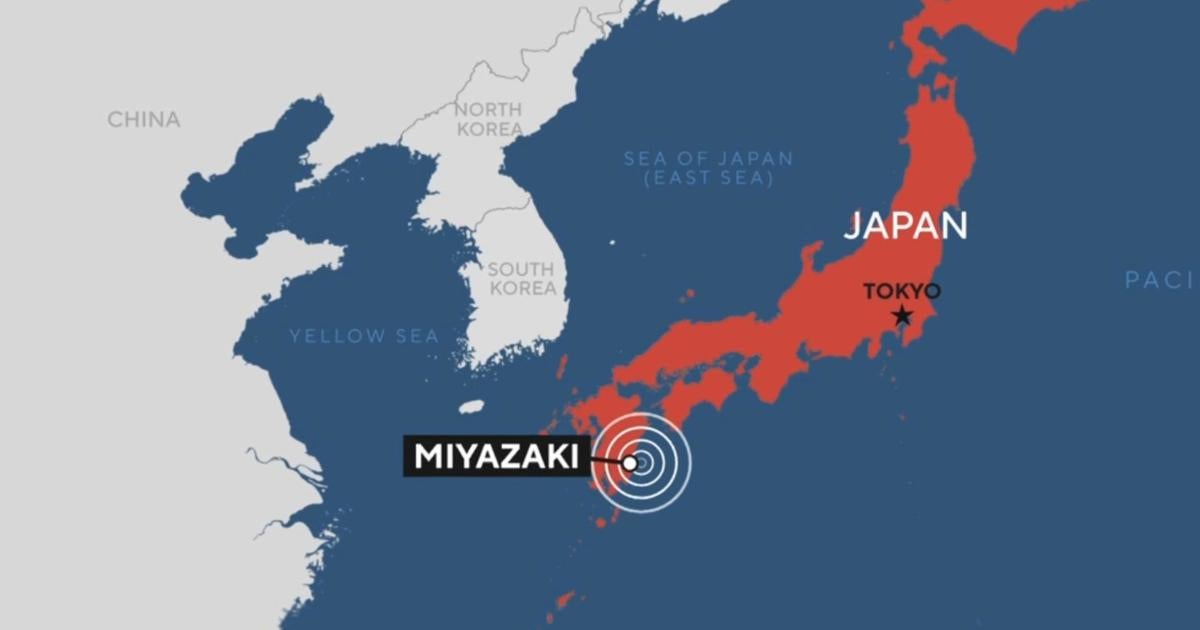Japan has issued a tsunami warning after a 6.7 magnitude earthquake struck the country’s southwest, the country’s meteorological agency said Monday. Public warnings to stay away from coastal areas were later lifted.
The agency initially estimated the magnitude at 6.9, but later revised it downward. No damage was immediately reported. Residents in some coastal areas were asked to evacuate as a precaution.
A man was lightly injured in Kyushu after falling down some stairs, NHK television reported. Trains stopped at Miyazaki Station, stranding passengers.
NHK said a tsunami, estimated to be up to 3.2 feet high, reached land within 30 minutes of the quake. Waters detected at Miyazaki Port were 8 inches high, according to reports.
Tsunami advisories were issued for Miyazaki Prefecture, where the quake was centered, on the southwest island of Kyushu, as well as neighboring Kochi Prefecture, on the island of Shikoku, shortly after the earthquake. earthquake at 9:19 p.m., according to the agency. They were all called back shortly before midnight.
United States Geological Survey revised its estimate against 6.9, adding that “there is no tsunami threat related to this earthquake” for the United States.
The JMA nevertheless urged the public to stay away from coastal waters. “The tsunami may strike multiple times. Please do not enter the sea or approach coastal areas,” the agency said on social media.
Shigeki Aoki, head of the agency, told reporters that people should watch out for landslides as well as falling objects into homes. Aftershocks are possible, especially in the next two or three days, he added.
The earthquake, centered at a depth of 30 km, shook a wide area on Kyushu, the southwestern main island, the Japan Meteorological Agency said.
Images from NHK television showed smooth traffic and well-lit streets, meaning the electricity was still working. No problems were detected at the various monitoring stations of the nuclear power plants in the area.
Japan is frequently hit by earthquakes due to its location along the “Ring of Fire”, an arc of volcanoes and fault lines in the Pacific basin.
Experts from the meteorological agency met Monday evening to assess the link between this latest tremor and the so-called Nankai Basin earthquakes, but decided not to take any extraordinary measures for the moment. The term refers to a large region considered prone to periodic major earthquakes.
An earthquake in the Nankai Trench off Shikoku in 1946 killed more than 1,300 people.
Last August, a powerful earthquake removed from southern Japancausing mostly minor injuries but raising the level of concern about possible major earthquakes from an undersea trough to the east of the coast.
A earthquake of January 1, 2024 in the north-central region of Japan of Noto left more than 240 dead.
Japan has strict construction rules intended to ensure buildings can withstand strong earthquakes, and regularly holds emergency drills to prepare for a major shake.
But the country is haunted by the memory of a massive 9.0 magnitude underwater earthquake off northeast Japan in March 2011, which triggered a catastrophe. tsunami which left around 18,500 dead or missing.
The 2011 tsunami also caused the meltdown of three reactors in Fukushima nuclear power plant, causing Japan’s worst post-war disaster and the most serious nuclear accident since Chernobyl.
In March 2022, a magnitude 7.4 earthquake off the coast of Fukushima shook large areas of eastern Japan, killing three people.
The capital Tokyo was devastated by a massive earthquake just over a century ago, in 1923.
Agence France-Presse contributed to this report.






